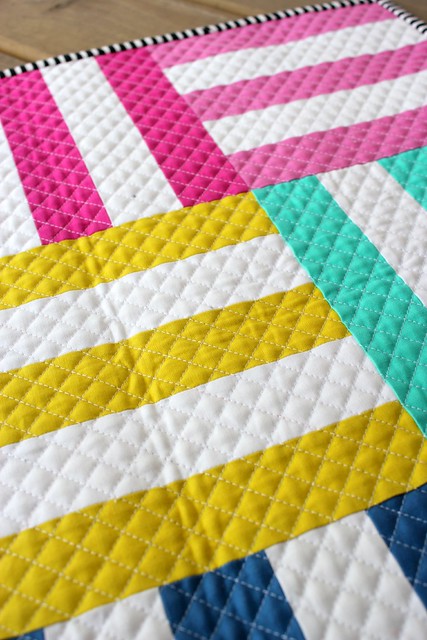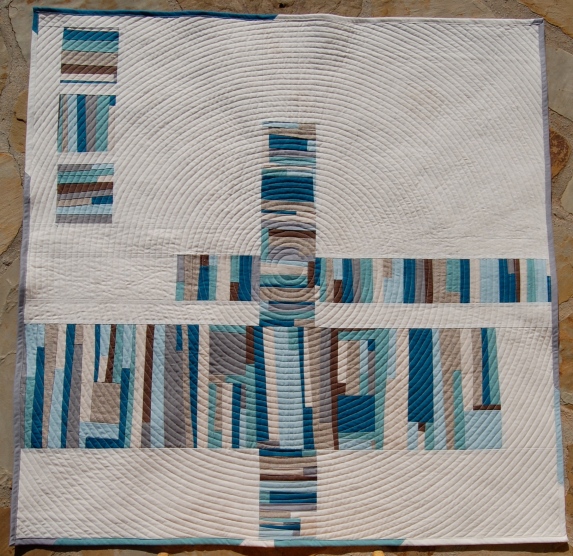If you're a quilter, you're probably familiar with the term "Stitch in the Ditch". This is a method of quilting where your quilt directly in the seam lines of your quilt.
Quilters turn to it for two reasons - because it emphasizes the piecing, and because it often seems easier than other types of quilting. It can be done in straight or mostly straight lines with a walking foot and feed dogs.
Another option similar to stitching in the ditch is to stitch OVER the ditch. Instead of stitching a straight line, try a zig zag or serpentine stitch.
Stitching over the ditch gives you a different look to your quilting, and it has another advantage - if you veer slightly from the center, it doesn't show as much. The same holds true for if your piecing is slightly less than perfect - this quilting technique can help mask those imperfections.
The setup for stitching over the ditch is very similar to setting up for in the ditch. Attach a foot with a center guide or a walking foot with a center guide.
Thread the machine with Mettler Transfil transparent thread (use clear for light colors or smoke for dark colors).

An excellent choice for stitching over the ditch is a running stitch. A running stitch looks similar to a zig zag but runs back and forth from side to side. Lengthen the running stitch to get a smooth serpentine stitch.
Once your machine is set up, threaded, and your stitch selected, stitch over the seam lines, keeping the center guide of your foot aligned with your seam.
Another option for stitching over the ditch is a simple zig zag. You can zig zag over your seams in nearly any width. A narrow zig zag will give you the most emphasis on your piecing.
Experiment with different stitches to find results you love. If you are using this technique to help hide imperfections in your piecing, avoid stitch types with a center line (like a feather stitch).









































